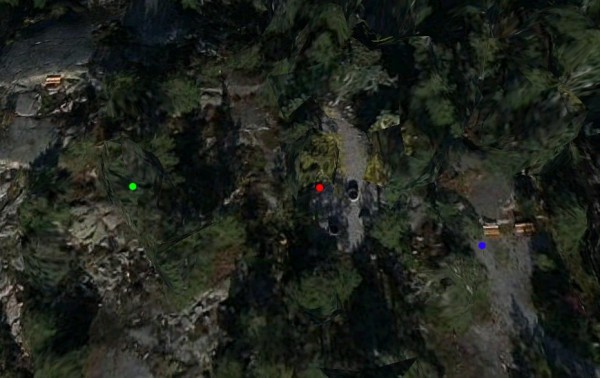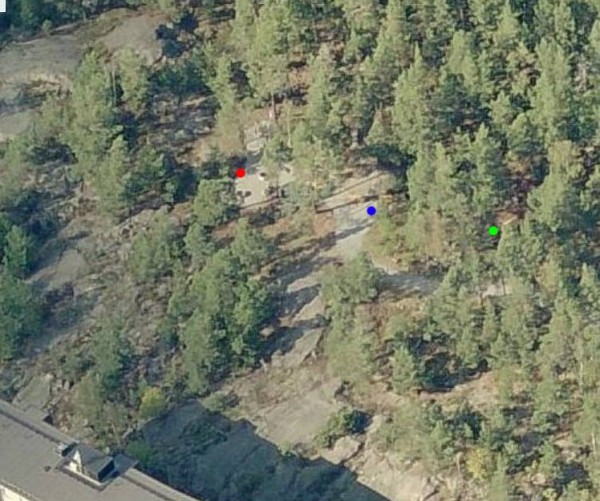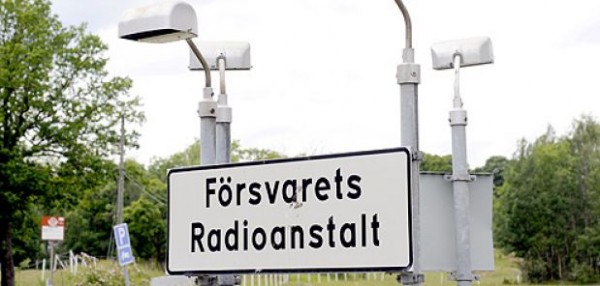A friend revealed at the last movie night gathering that he is going to Kilimanjaro and asked for some advice on what equipment to bring and I thought I would collect my own thoughts on the subject. Loving to walk around in the woods and hiking in the more mountainous areas in Sweden I have a little experience and I would like to share my thoughts on that subject.
First of all everything depends on your weight constrains. Do you have people who can share your load and help you carry camera gear and are happy to do so, then you have a bigger freedom. Do you have to carry everything yourself, taking into account that the partial oxygen pressure at 4 000 m above sea level is about half the normal pressure you probably wish to slim it down. Therefore I will make three recommendations, one where weight is an issue but not a big problem, one where you are a bit more weight consciousness but you might be able to share lenses and other equipment with a friend or two and the last one is if you have to carry everything yourself and must minimize the weight.
Camera body
The camera bodies can be divided into mainly four groupings, the entry-level cameras, the more advanced hobbyist cameras, the semi-pro segment and the professional high-end cameras. Each of them have various advantages and disadvantages and the best camera for an expedition like this is a trade off between several different factors such as weight, capabilities, picture quality and ruggedness.
Below is a table that shows a comparison between many common models from Nikon and Canon, it is not complete but if you want you can help me by submitting more information through email or by leaving a comment on this post. I also have no experience with cameras of other brands so that would also be appreciated if someone would add more information.
In the table below type refers to the four main types of camera bodies that I talked about earlier, size is a grading where 1 is the lightest house and 5 is the most heavy house. Weight is similar to size in this aspect, price is a subjective feeling for the cost for the house alone, quality is a subjective idea of the picture quality the camera produces (and not fixed to the amount of pixels alone but a general feel for noise at high ISO settings and so on). Rugged means the camera is less suited to outdoors activity (1) or better suited (5). Notice that no camera actually gets a 5 here, this is to mark that all cameras are sensitive but handles shocks, dampness, dust and moisture more or less well.
The comparison is also subjective based on personal experience and friends suggestions so you might think your model got an unfair rating in one or more of the columns, you are okay to leave a comment and tell me about it and I will consider revising the table.
[TABLE=5]
Click on the column headers to sort the table for each parameter you are looking at in order to determine what you think would be the best type of body for your expedition!
Which is right for me?
If size matters mostly you should take a look at entry-level and hobbyist cameras. They are slimmer in size and also weigh less than the other cameras. However they usually do not deliver the same quality of pictures as the more pricy, hefty cameras but this should not be a problem mostly since it is much more up to the photographer than his equipment how good pictures becomes in the end.
If you can expand a bit on size but still wish to keep the weight down, take a look at the semi-pro range. This is where you will get the most bang for the bucks and the most quality for the weight and size of the camera.
If you are a professional photographer demaning the absolutely best from your camera, then you already know what to take with you. Of course you will take your beloved D3 or 1D camera to the top, no matter the size and weight of it.
Lenses
The next problem is to find out what lenses to take with the camera body. I will recommend three lenses if weight and size is not a constrain and this is the normal recommendation always:
- A good wide angle
- A great normal
- A good telephoto
And it is here the DX format cameras have an advantage. You get resonably good lenses for a good price and low weight which means you might bring an extra lens compared to the full-frame FX format cameras where you need more hefty and expensive glassware to go with the body.
Not only are the lenses heavier for FX cameras because they have to deliver a wider image circle to the sensor but they also need a step up in quality because of the added resolution. A cheaper lens will show that it is a cheaper lens on a higher quality camera body more than on a lower grade body.
Lenses for Nikon DX body camera
DX-body recommendations, 3 lenses
Now, here are some recommendations of lenses for a Nikon DX camera setup that I think you would find reasonable:
Nikkor AF-S DX VR 16-85 f/3,5-5,6G ED-IF
This is a sharp lens that gives you that extra in the wide angle area and also goes all the way to work as a pretty good normal lens in the range of 30-70 mm as well. Really this is a gread all-round lens that you can find use for in almost any situation.
The VR function to reduce vibrations works very well here and gives you the ability to shoot scenery with as much as 4 stops lower light than you would without it! This is really great.
The disadvantage with this lens is that it is not very strong in low light conditions and therefore I would recommend another lens, the famous;
Nikkor AF 50 f/1,8D
This is a cheap but very very good lens. Gives you crystal sharp pictures, can be used a low light conditions with no problems and is great for portraits and details as well as panorama pictures where you shoot several pictures in order to later stitch them together to one large photograph. One of my personal favourites of all times!
Nikkor AF-S VR 70-300 f/4,5-5,6G ED-IF
This is a really neat lens to get close to wildlife. Especially on a DX body where it gives you the equivalent of a 500 mm lens on a full size sensor body. It is just plain lovely and I love this lens. It is sharp, low in distorsion and reasonably light weight as well as the price is not bad at all.
The VR function means you are able to shoot hand-held at 300 mm even in moderate light conditions! Few other lenses would allow you to do that.
DX-Body recommendations, 2 lenses
Nikkor AF-S DX VR 18-200/3.5-5.6G ED-IF
This lens is a one stop shop. If you can only afford in weight and size to take one piece of glass for your camera get this one. I know the sharpness is not the best but the usefullness of this lens to go from a good wide angle to a reasonable tele is just priceless! And the the price on this lens is also pretty neat. You may even find used lenses for half their new prices on Ebay or similar places.
One thing though, when you walk with your camera this lens has a tendency to extend by itself. Get some rubber bands or something to keep it from extending by itself when you walk and you should be ready for anything really.
The 18-200 is good for wide angle nature shots as well as portraits and you may also zoom in to capture that wild-life that happens just out of reach of other lenses.
Nikkor AF 50/1.8D
Because it is so light and you can use it for so many different things including lovely panoramas (hand held no less). Take it. It weighs almost nothing and the size is really small.
DX-Body recommendations, 1 lens only
See the two lenses recommendation above. I mean that, seriously, the 18-200 for versatility and the 50/1.8 is so small, cheap and light in weight there is absolutely no reason for you not to take it with you!
FX-Camera recommendations
This is very tricky really because if you are using FX cameras you have already committed to heavier gear and so perhaps you do not have the same constraints in weight and size. However, if you want to keep weight down the f/2.8 lenses are very heavy and you should try to find alternatives. The 70-300/3.5-5.6 described in the DX section works equally well for the FX cameras so this would be a given light telezoom of reasonable quality to bring.
One or two fixed focals such as 30 and 50 mm would be very useful as well for shooting low light conditions.
Vibration reduction
Lenses with VR are great especially if you can not afford to bring a tripod for the weight or the cumberness of it. However it does not replace a good fast low-light lens because it does not help with moving objects for example.
Remember that when the camera is tripod mounted or otherwised fixated you should turn the VR function off. Otherwise it might actually cause blurred pictures! And it also uses battery power for no gain.
Batteries
Make sure you have batteries with you. Since you are away for days and will not be able to recharge it is really good if you can get a battery grip for your camera that you can use ordinary size AA (R6) batteris in since you can find these batteries in almost everywhere in the world and the alcaline version keeps for ages in your bag. It also takes just a few seconds to replace the batteries when you need to.
Many cameras also deliver more performance when you use battery grip with the camera. As an example the Nikon D300 camera can deliver 5 frames per second continuous shooting with the standard battery. With 8 size AA batteries in the battery grip you can get a whopping 8 fps from it! This is something that you normally would not expect unless you were using the most professional types of cameras. Check your specifications! 8 fps is really great when shooting fast events such as wildlife!
Batteries are heavy but make sure you have enough. Make sure you also know roughly how many pictures you are able to take before it is time to change batteries. Keep in mind also that in cold temperatures batteries do not fare well in delivering their energy and will go flat much faster than in moderately sized temperature. Also beware of old batteries leaking in hot temperatures, remove from camera and store in sealed watertight plastic bags until you reach some place where you can dispose of them safely and environmentally sound!
There are solar chargers on the market that claim they can charge 4 x R6 or 4 x AA sized batteries on solar energy given 12-20 hours of sunshine. I would not rely on these for an expedition like this. Keep alkalines ready to use!
Accessories
Tripod
A tripod is always a best friend of a photographer. But it is also a rather big and heavy item. However the usefullness of a tripod can not be stressed enough really although it is up to you if you can carry it or not. There are also other options that can be used during certain situations that works well and in this section I will attempt to discuss some of them and their advantage or disadvantage to a proper tripod setup.
Bean bags
These are really simple things, you can make them yourself quite easily, make a rectangular piece of cloth, doulble the langth compared to the witdh. Stitch two sides of it together carefully, then fill it up to 2/3 with something like dry rice, lentils, beans or something similar. Stitch the last part together and you now have a ”bean bag” which you can put on a stone or similar to rest your camera on serving as a crude but pretty effective tripod.
If you are using a longer telephoto lens, then the lens will also need the support of one or more bean bags and you can make them in different sizes for different situations. Then when you put the camer on to them you can push and prod the bean bag until you get the right framing of the scene you are trying to shoot.
An added bonus is that you can boil the beans as emergency rations should the need arise.
Gorilla pod
The gorilla pod is a short snake-looking tripod construction but it mainly works well for lighter cameras. If you are thingking of using one of these you should check it out with the different lenses that you are going to want to use. A too heavy lens will make the gorillapod seem like a toy.
Memory cards
Not much to say, bring enough. Depends a little bit on how you work with your camera but bring more than you think you need. It is always hard to start erasing pictures in camera in order to fit more pictures. You never know until you are back home eactly how the focus went because you need to view the pictures on a full screen or at least bigger than on the display back on the camera.
And don’t use that display to judge the exposure, for that you need to learn how to use the histogram in the camera. The display is nice for checking framing and when you zoom in you get some idea where the focus went but for exposure it is very difficult to use.




























 –
–









